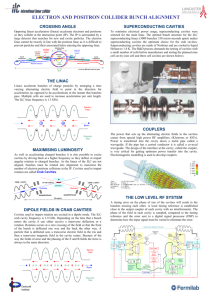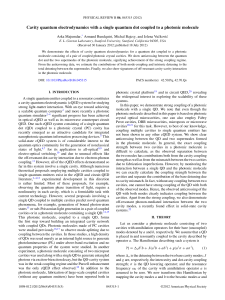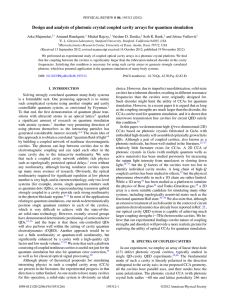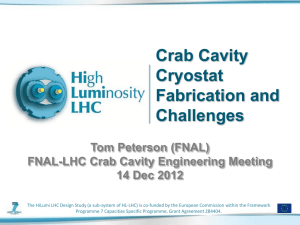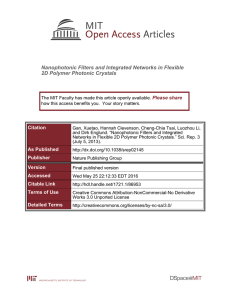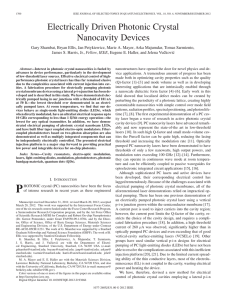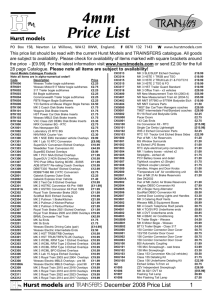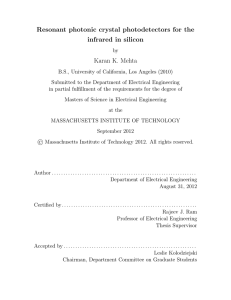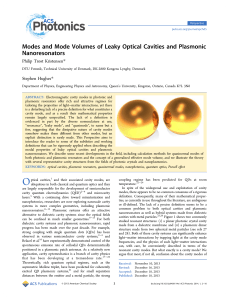Jamil - Supplemental information - 3rd revision
advertisement
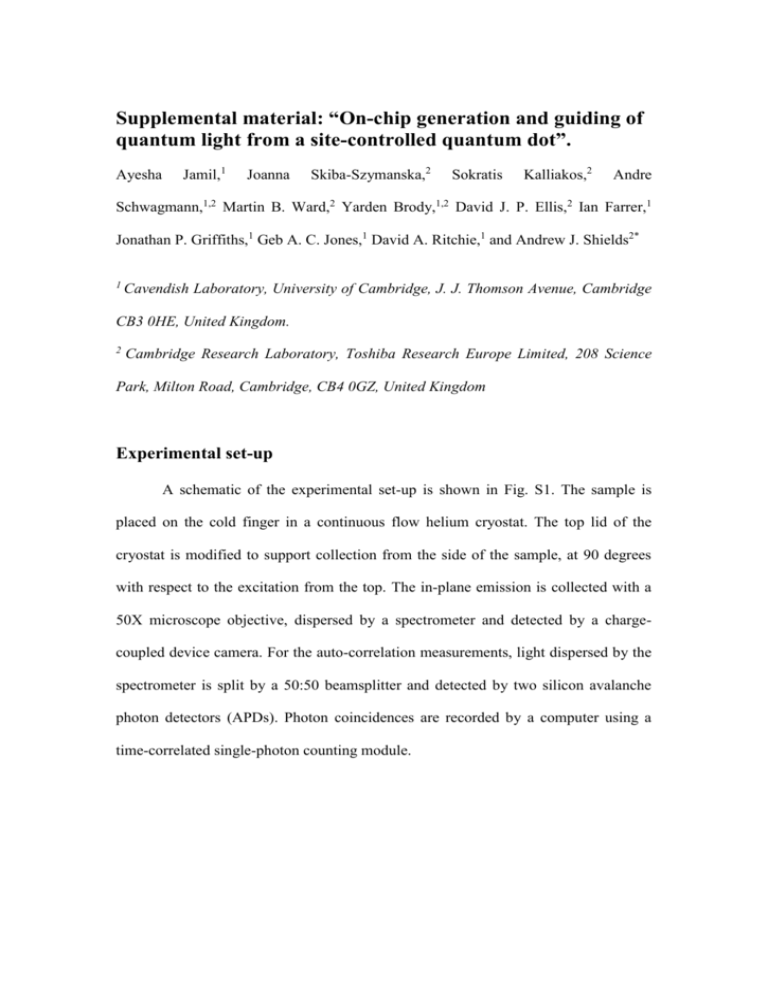
Supplemental material: “On-chip generation and guiding of quantum light from a site-controlled quantum dot”. Ayesha Jamil,1 Joanna Skiba-Szymanska,2 Sokratis Kalliakos,2 Andre Schwagmann,1,2 Martin B. Ward,2 Yarden Brody,1,2 David J. P. Ellis,2 Ian Farrer,1 Jonathan P. Griffiths,1 Geb A. C. Jones,1 David A. Ritchie,1 and Andrew J. Shields2* 1 Cavendish Laboratory, University of Cambridge, J. J. Thomson Avenue, Cambridge CB3 0HE, United Kingdom. 2 Cambridge Research Laboratory, Toshiba Research Europe Limited, 208 Science Park, Milton Road, Cambridge, CB4 0GZ, United Kingdom Experimental set-up A schematic of the experimental set-up is shown in Fig. S1. The sample is placed on the cold finger in a continuous flow helium cryostat. The top lid of the cryostat is modified to support collection from the side of the sample, at 90 degrees with respect to the excitation from the top. The in-plane emission is collected with a 50X microscope objective, dispersed by a spectrometer and detected by a chargecoupled device camera. For the auto-correlation measurements, light dispersed by the spectrometer is split by a 50:50 beamsplitter and detected by two silicon avalanche photon detectors (APDs). Photon coincidences are recorded by a computer using a time-correlated single-photon counting module. Figure S1. Schematic illustration of the experimental set-up. Dimensions are not to scale. Alignment precision We determine the precision of our alignment method by a statistical analysis of several photonic crystal devices. Using a wafer with etched pits in an array configuration identical to the one used for the overgrown sample, we fabricated photonic crystal cavities under the same conditions. This time, the slab containing the quantum dot layer was not overgrown allowing us direct access to the pit location using conventional imaging techniques. Large arrays of L3 cavities with the pits in the center of the cavity were fabricated. An SEM image of such a device is shown in Fig. S2. The symmetry of L3 cavities helps in the estimation of the lateral position of the center and they were used instead of waveguide structures. In Fig. S2, the etched pit appears as a dark spot in the middle of the cavity. We measured over 60 devices from which we estimated an average offset of the pit with respect to the cavity center of 64 nm with a standard deviation of 21 nm. No strong bias was found along any particular direction. We note that the alignment marks are covered during the overgrowth procedure, leaving them exposed for optimal alignment in the subsequent electron beam lithography step for the fabrication of the photonic crystal structure. Figure S2. Scanning electron microscope image of an L3 cavity. The dark spot in the middle is the etched pit.








